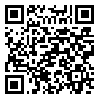Volume 4, Issue 12 (VOL. 4, No. 12, 2015 2015)
2015, 4(12): 141-152 |
Back to browse issues page
Download citation:
BibTeX | RIS | EndNote | Medlars | ProCite | Reference Manager | RefWorks
Send citation to:



BibTeX | RIS | EndNote | Medlars | ProCite | Reference Manager | RefWorks
Send citation to:
Jenabiyan M, Pirdashti H, Yaghoubian Y. Effect of Light Intensity on Cold Tolerance in Soybean [Glycine max (L.) Merr.] Using Chlorophyll Fluorescence Technique. Plant Process and Function 2015; 4 (12) :141-152
URL: http://jispp.iut.ac.ir/article-1-250-en.html
URL: http://jispp.iut.ac.ir/article-1-250-en.html
1- Sari Agricultural Sciences and Natural Resources University, Sari.
2- Agronomy Department, Genetics and Agricultural Biotechnology Institute of Tabarestan, Sari Agricultural Sciences and Natural Resources University, Sari. ,h.pirdashti@sanru.ac.ir
3- Khouzestan Ramin Agriculture and Natural Resources University, Ahvaz.
2- Agronomy Department, Genetics and Agricultural Biotechnology Institute of Tabarestan, Sari Agricultural Sciences and Natural Resources University, Sari. ,
3- Khouzestan Ramin Agriculture and Natural Resources University, Ahvaz.
Abstract: (7937 Views)
In order to evaluate the effects of both cold and light stresses on chlorophyll fluorescence and feasibility of using chlorophyll florescence technique to evaluate effect of light intensity on cold tolerance in soybean, an experiment was done in a factorial arrangement based on a completely randomized design with three replicates. Two soybean cultivars consisted of 032 and BP grown under greenhouse conditions. After three weeks, plants were kept in either 5 or 28 °C and either 2000 or 8000 lux of light intensity then chlorophyll fluorescence parameters was measured. Results showed that cold stress in both light intensities significantly decreased variable fluorescence (Fv), maximum photochemical quantum yield of photosystem II (Fv/Fm) and effective photochemical quantum yield of photosystem II [Y(II)] while increased quantum yield of regulated non-photochemical [Y(NPQ)], quantum yield of non-regulated non-photochemical [Y(NO)] and non-photochemical quenching (NPQ). These parameters, however, generally more changed in 8000 than in 2000 lux. Under cold stress, reducing in Fv/Fm and increasing in NPQ was greater in 032 than BP cultivar. Also, in 032 cultivar, greater ratio of reduced Y(II) replaced by Y(NPQ) to avoid greater increase in Y(NO). Cold stress in two light intensities (2000 and 8000 lux) could damage to photochemical and photosynthetic systems in soybean plants, however, damage rate increased when light intensity increased from 2000 to 8000 lux. In cold stress conditions, cultivar 032 showed more tolerance than BP since it could dissipate more excessive energy through non-photochemical quenching and xanthophylls. Therefore, 032 cultivar showed more tolerance to cold stress and could be recommended particularly for regions with cold temperature along with higher light intensity.
Type of Study: Research |
Subject:
thermal stress
Received: 2014/03/2 | Accepted: 2014/12/2 | Published: 2015/07/26
Received: 2014/03/2 | Accepted: 2014/12/2 | Published: 2015/07/26
Send email to the article author
| Rights and permissions | |
 | This work is licensed under a Creative Commons Attribution-NonCommercial 4.0 International License. |






